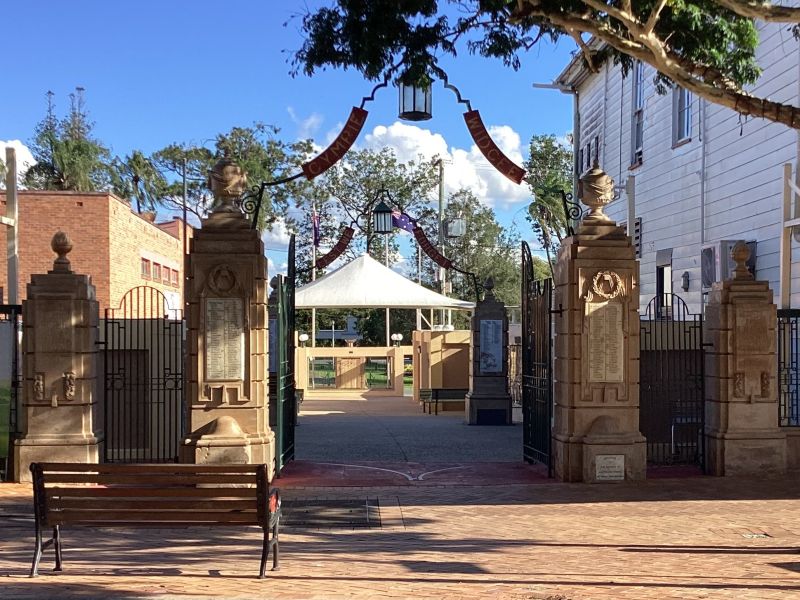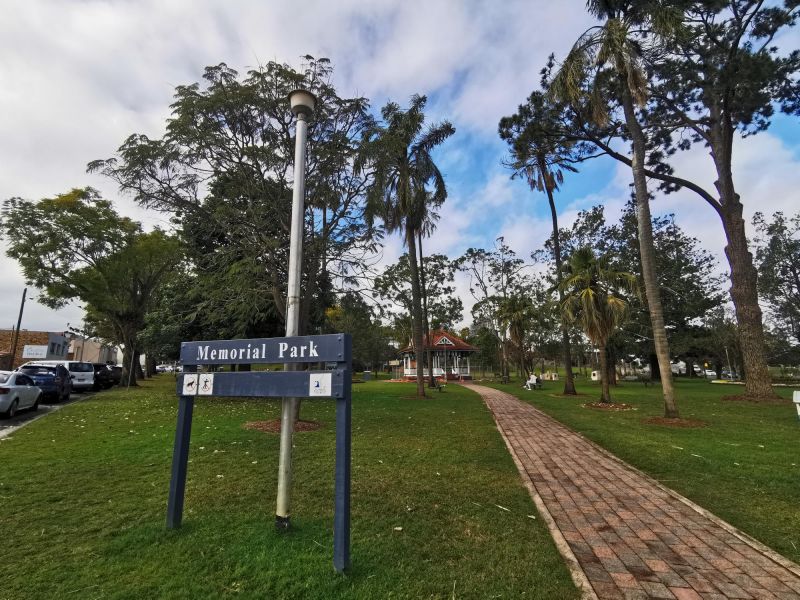Place as Memorial
Memorial Park, Gympie is a rare example in Australia of a public park space conceived to serve as a memorial, not just in name, but the natural place itself as the embodiment of commemoration.
On 9 January 1919, only two months after the end of World War I, the Mayor of Gympie, Alderman Robert Stitt, chaired a public meeting called to consider a suitable memorial for soldiers who had lost their lives. At the meeting an account of Mr. E Bytheway indicated support for a park for returned soldiers. “He [Bytheway] approved the idea to establish a place of rest as the other day, when passing along Channon street, two returned soldiers stopped him and asked where they could go and rest.” (Gympie Times and Mary River Mining Gazette, January 11, 1919 p. 4.)
As a result of the decision to establish the park, the Gympie and Widgee District Fallen Soldiers Memorial Committee sought the expertise of Brisbane's Parks Superintendent, Henry (Harry) Moore. The Committee "...asked that the Parks Superintendent be allowed to visit Gympie for the purpose of advising in connection with the laying out of Memorial Gardens." (The Brisbane Courier. 15 July 1919 p. 6)
"It was for the meeting to decide whether the memorial should be a park or monument. Some feeling had been worked up, but he hoped all would look at it in the same way as the boys who went to the front and fought as one. In the same way he hoped citizens would pull together and fittingly commemorate their brave boys." (Gympie Times and Mary River Mining Gazette, February 11, 1919 p. 2.)
In the wider context of post-WWI Australia, most local communities decided on a monumental approach (60%) for war memorials, with 22% choosing utilitarian buildings (the majority of those as halls) and 18% choosing the combined position of utilitarian monuments. (Inglis, Sacred Places: War memorials in the Australian landscape, p. 144.) An example of this hybrid utility and monument function would be the Thirroul Soldier's Memorial Fountain - a monument structure designed to also serve as public access to drinking water. As Inglis has observed, the majority of memorials were "...created for civic committees who wanted their messages to be generally intelligible, and who therefore opted for less esoteric forms." (Inglis, p. 118.) This further reinforces the uniqueness of the approach Gympie was taking for a war memorial designed as both a public park (civic utility) and memorial place (monument).
In his report to Gympie's memorial committee Henry Moore wrote, "...the chief objection is the absence of an adequate entrance from Mary street. If this can be assured, and no serious damage anticipated from flood waters, I would recommend this site for favourable consideration."
As evidence of support for the proposed park idea the owners of the property adjoining the proposed park, Messers. N. Anderson and Son, placed their land (Allotment 8) under offer to the committee to facilitate this prerequisite access to the park. (GRC, CMP)
The provision of this park entrance from Mary Street also established the pedestrian walkway that is home to monuments such as the Gympie and Widgee War Memorial Gates, the Gympie WW2 Memorial Columns, and the decorated walls and plaques of Memorial Lane. The park space itself also contains many memorials and so continues to serve this dual purpose of civic utility and monument for the local community.
It would be generally accepted that the idea of a garden is a place that is tended to, cared for and nurtured through active custodianship. In return it provides a place of shelter, reflection, rest, and recuperation. So too Memorial Park continues to serve as both a place of community pride, natural open space and celebration of present-day living, as well as a humbling space of story, solitude, remembrance, and mourning of those who have fallen.
- Gympie Times and Mary River Mining Gazette. January 11, 1919 p. 4 http://nla.gov.au/nla.news-article188707411
- The Brisbane Courier. 15 July 1919 p. 6 http://nla.gov.au/nla.news-article20373462
- Gympie Times and Mary River Mining Gazette. February 11, 1919 p. 2 http://nla.gov.au/nla.news-article188704717
- Gympie Regional Council - Memorial Park Conservation Management Plan https://www.gympie.qld.gov.au/recreation-tourism/about-the-gympie-region/local-…



